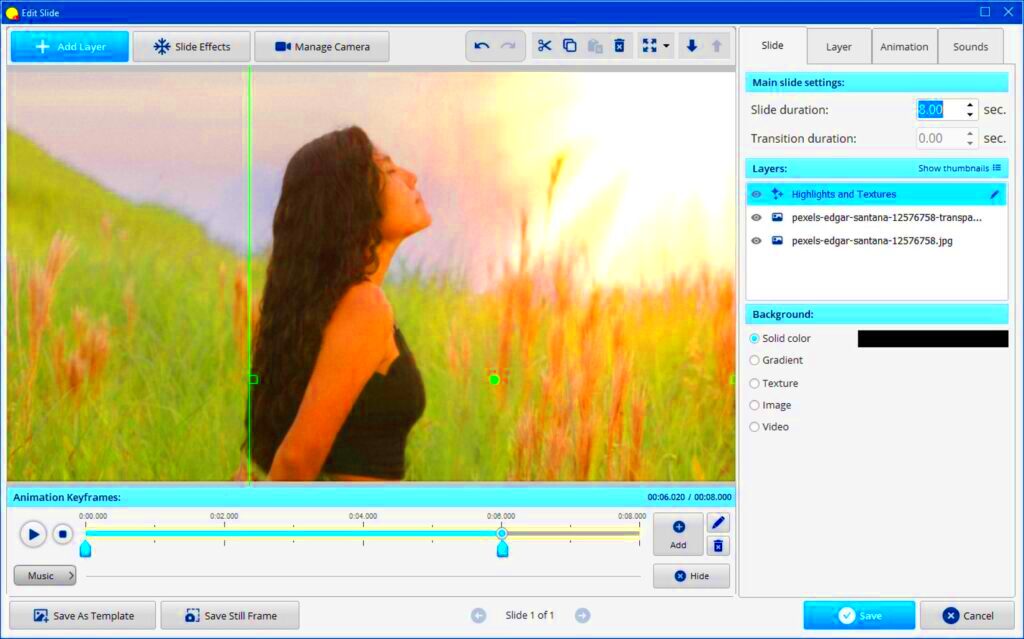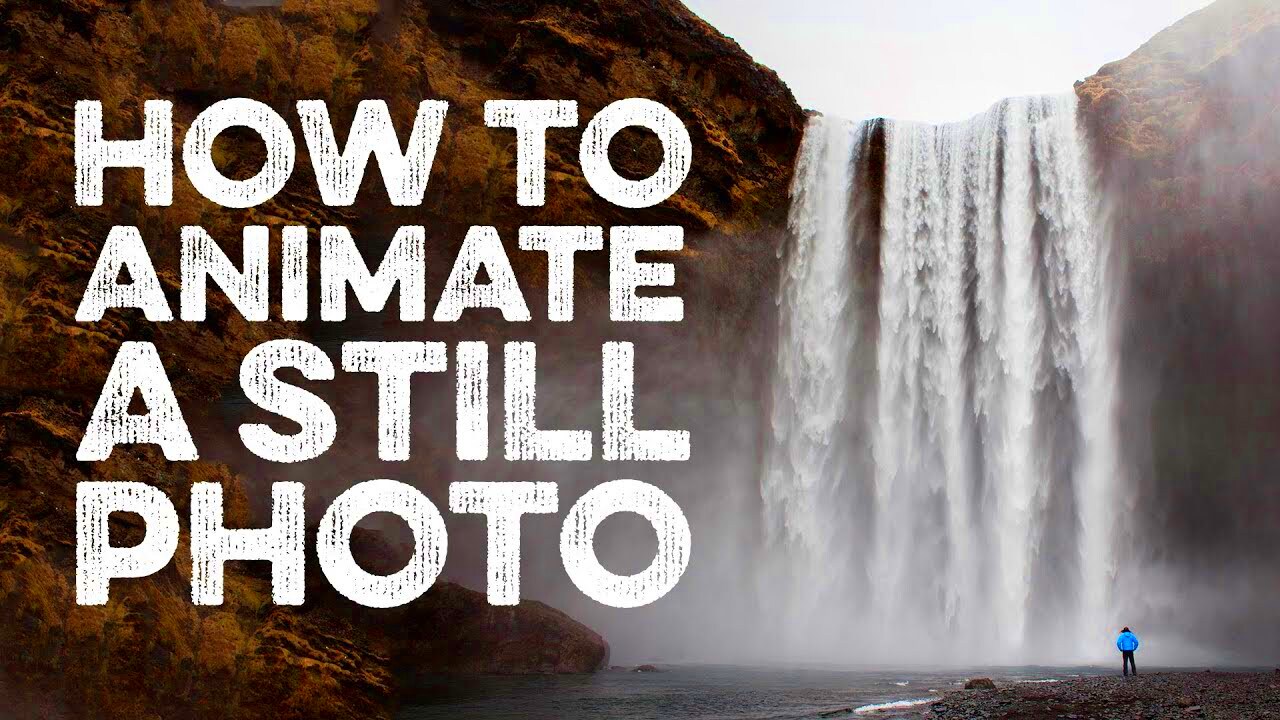Animating still images can transform your visual content, making it more engaging and dynamic. Instead of simply displaying a static photo, animation breathes life into the image, capturing the viewer's attention. Whether you're a content creator, marketer, or artist, incorporating animation can enhance your storytelling and elevate the viewer's experience.
Benefits of Adding Animation to Still Images

Adding animation to still images offers numerous advantages:
- Increased Engagement: Animated content often attracts more attention than static images, encouraging viewers to interact with your material.
- Enhanced Storytelling: Animation helps convey emotions and narratives more effectively, making your message clearer.
- Versatility: Animated images can be used across various platforms, from social media to presentations, allowing for broad application.
- Improved Retention: Viewers are more likely to remember animated content, leading to better information retention.
- Brand Identity: Unique animations can help establish a distinct brand personality, making your content stand out.
Also Read This: Mastering Adobe Stock Templates in Premiere Pro
Types of Animation Techniques

There are several techniques you can use to animate still images, each offering different effects and styles:
- Frame Animation: This technique involves creating a sequence of images that, when played in order, create the illusion of movement.
- GIF Animation: GIFs are short, looping animations that can be easily shared online, making them popular for social media.
- 2D Animation: Using software, you can animate elements within an image to create depth and movement.
- 3D Animation: This technique adds a three-dimensional aspect, making images appear more realistic and immersive.
- Parallax Scrolling: By layering images and moving them at different speeds, this technique creates a sense of depth and dimension.
Also Read This: How to Apply Makeup for Beginners with a Simple Step-by-Step Guide
Tools and Software for Animation

When it comes to animating still images, the right tools can make all the difference. There are various software options available, each catering to different skill levels and animation styles. Here are some popular tools:
- Adobe After Effects: A professional-grade software that allows for intricate animations and visual effects. It's perfect for detailed work but has a learning curve.
- Animaker: This is a user-friendly online platform ideal for beginners. It offers pre-made templates and easy drag-and-drop features.
- Photoshop: While primarily an editing tool, Photoshop has animation capabilities through frame animation and video layers, making it versatile for animators.
- Canva: Known for its design capabilities, Canva also offers simple animation features that are perfect for social media graphics.
- Blender: A powerful open-source tool for 3D animation, suitable for more advanced users looking to create stunning visual content.
Each of these tools has its strengths, so consider what suits your project needs and skill level best. Whether you want to create quick social media posts or intricate animations, there's a tool out there for you!
Also Read This: How to Become an Adobe Stock Photo Contributor
Step by Step Guide to Animate Still Images
Animating still images may seem daunting, but breaking it down into steps makes it easier. Here's a simple guide to get you started:
- Choose Your Image: Select a high-quality still image that you want to animate.
- Decide on Animation Type: Determine what kind of animation you want to apply, such as a subtle movement or a full transformation.
- Open Your Software: Launch the animation tool you’ve chosen and import your image.
- Create Layers: If necessary, separate elements of your image into different layers to animate them individually.
- Animate: Use the software's tools to add motion, transitions, or effects to your layers. Experiment with speed and direction.
- Preview Your Animation: Regularly preview your animation to see how it flows and make adjustments as needed.
- Export Your Animated Image: Once satisfied, export your project in the desired format, like GIF or video.
Follow these steps, and you’ll be animating like a pro in no time!
Also Read This: Creating Unique Wall Hangings at Home Inspired by Dailymotion Videos
Examples of Animated Still Images
Seeing examples of animated still images can inspire your creativity and show you what's possible. Here are a few types of animations you might encounter:
- Social Media Posts: Many brands use animated posts on platforms like Instagram to catch users' attention. For instance, an image of a product that subtly zooms in and out.
- Website Backgrounds: Websites often utilize animated backgrounds that create a dynamic feel, like a slowly moving landscape.
- Infographics: Animated infographics can illustrate data in a more engaging way. For example, a chart that animates to display growth over time.
- Digital Art: Artists frequently animate their artworks to create eye-catching pieces. This can include elements that move or change color.
- GIFs: These are everywhere online, from memes to tutorials, showcasing how still images can convey humor or information through animation.
Exploring these examples can help you identify styles and techniques that resonate with your vision for your animated projects!
Also Read This: Plugging Adobe Stock Templates into Premiere Pro
Common Challenges and Solutions
While animating still images can be rewarding, it's not without its challenges. Here are some common issues you might face and how to overcome them:
- Learning Curve: Many animation tools have steep learning curves. To address this, start with beginner-friendly software and utilize online tutorials and resources. Don't hesitate to practice regularly to build your skills.
- Image Quality: Animation can sometimes lead to a decrease in image quality. To prevent this, always use high-resolution images and export your final product in a suitable format that retains quality, such as PNG or high-quality MP4.
- Timing and Movement: Getting the timing of animations just right can be tricky. To improve this, try experimenting with different speeds and preview your work frequently. Feedback from others can also provide valuable insights.
- File Size: Animated images, especially GIFs, can result in large file sizes, which may be problematic for web use. Use optimization tools or choose formats that compress the size without losing too much quality, like APNG or MP4.
- Creativity Block: Sometimes, inspiration can be hard to find. Keep a visual library of references and take breaks to refresh your mind. Engaging with other artists and communities can spark new ideas.
By being aware of these challenges and implementing solutions, you can make your animation process smoother and more enjoyable.
Also Read This: How to Apply Eyeshadow: Step-by-Step Images for a Flawless Look
FAQ
Here are some frequently asked questions about animating still images that may help clarify common concerns:
- What software is best for beginners? Start with user-friendly tools like Canva or Animaker, which offer simple features without overwhelming complexity.
- Can I animate images on my phone? Yes! Many mobile apps, like Pixaloop or GIF Maker, allow you to animate images directly from your smartphone.
- What formats can I use to export my animations? Common formats include GIF for short animations, MP4 for videos, and APNG for high-quality animated images.
- How long should my animations be? Keep them short and engaging, ideally between 5 to 15 seconds for social media content.
- Do I need to be an artist to animate still images? Not at all! Basic animation skills can be learned, and many tools provide templates and guides to help you create stunning animations.
Conclusion
Animating still images is an exciting way to enhance your visual storytelling. With the right tools and techniques, you can create engaging content that captures your audience's attention. Remember to start small, practice regularly, and don’t hesitate to seek inspiration from others. Whether you're promoting a brand, sharing personal art, or simply having fun, animation can add a dynamic touch to your images. So, dive in, explore different styles, and let your creativity flow!

 admin
admin








